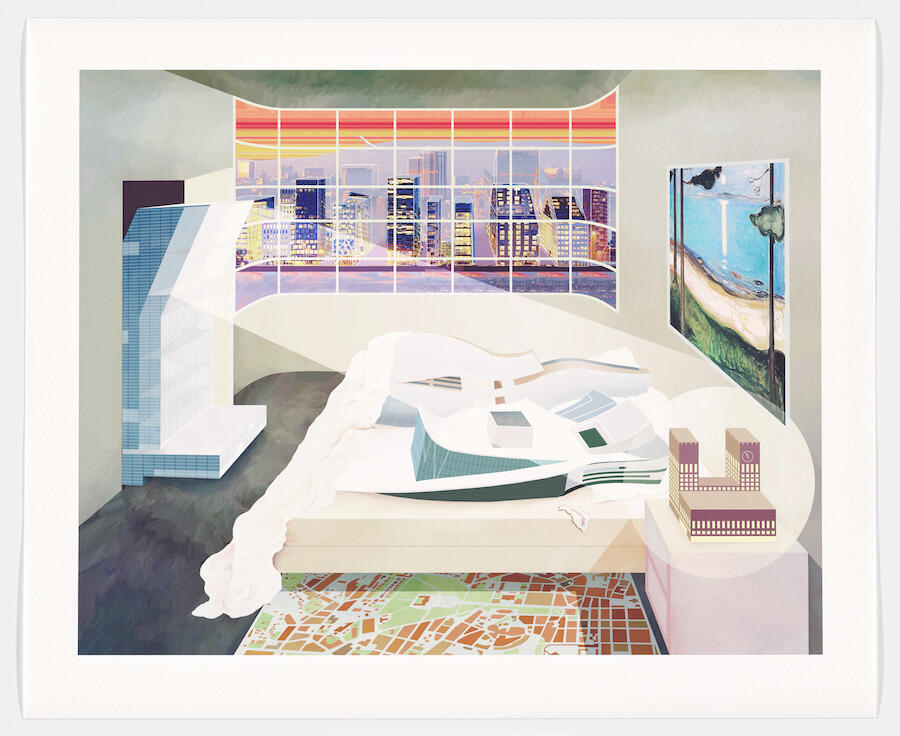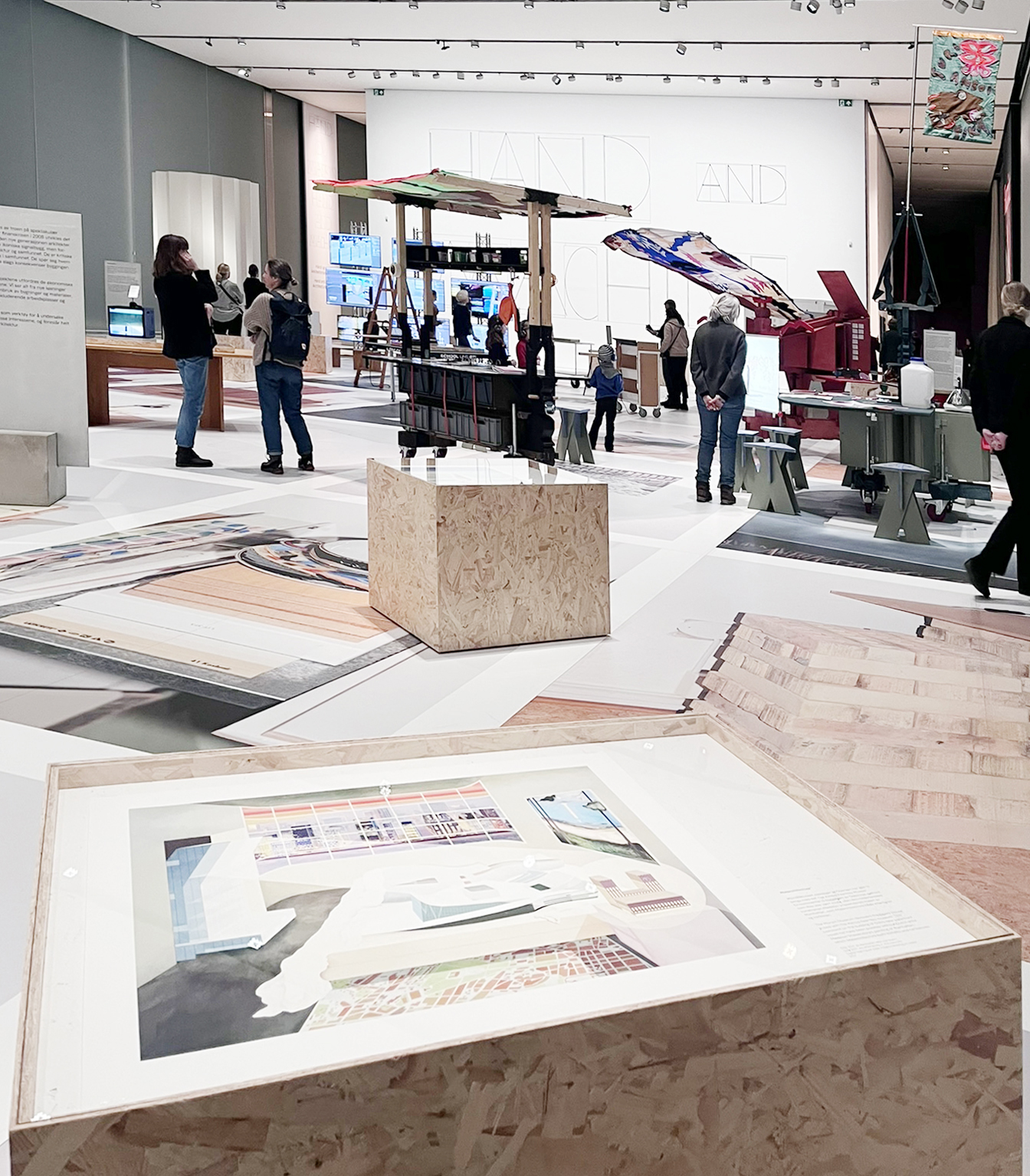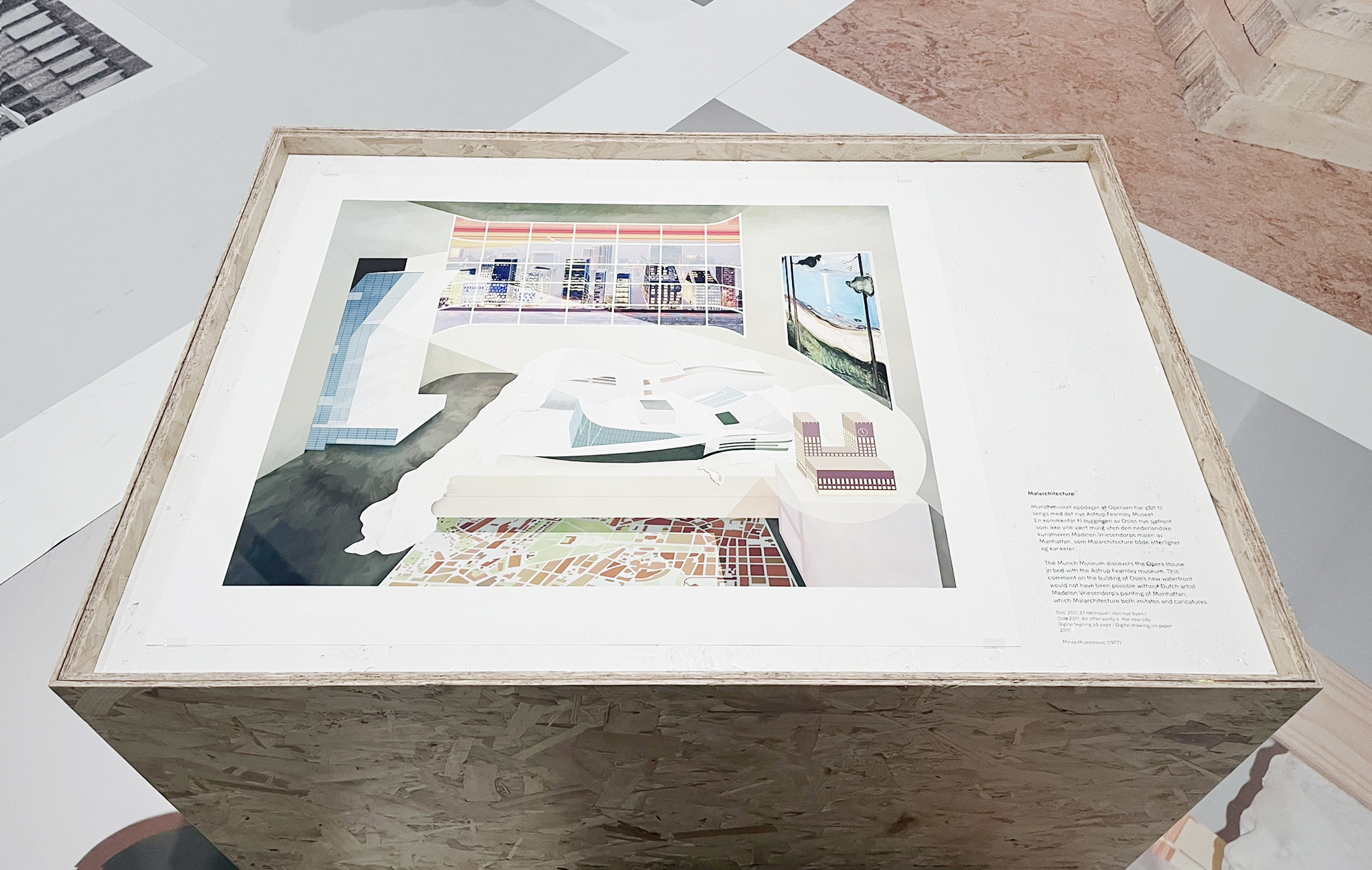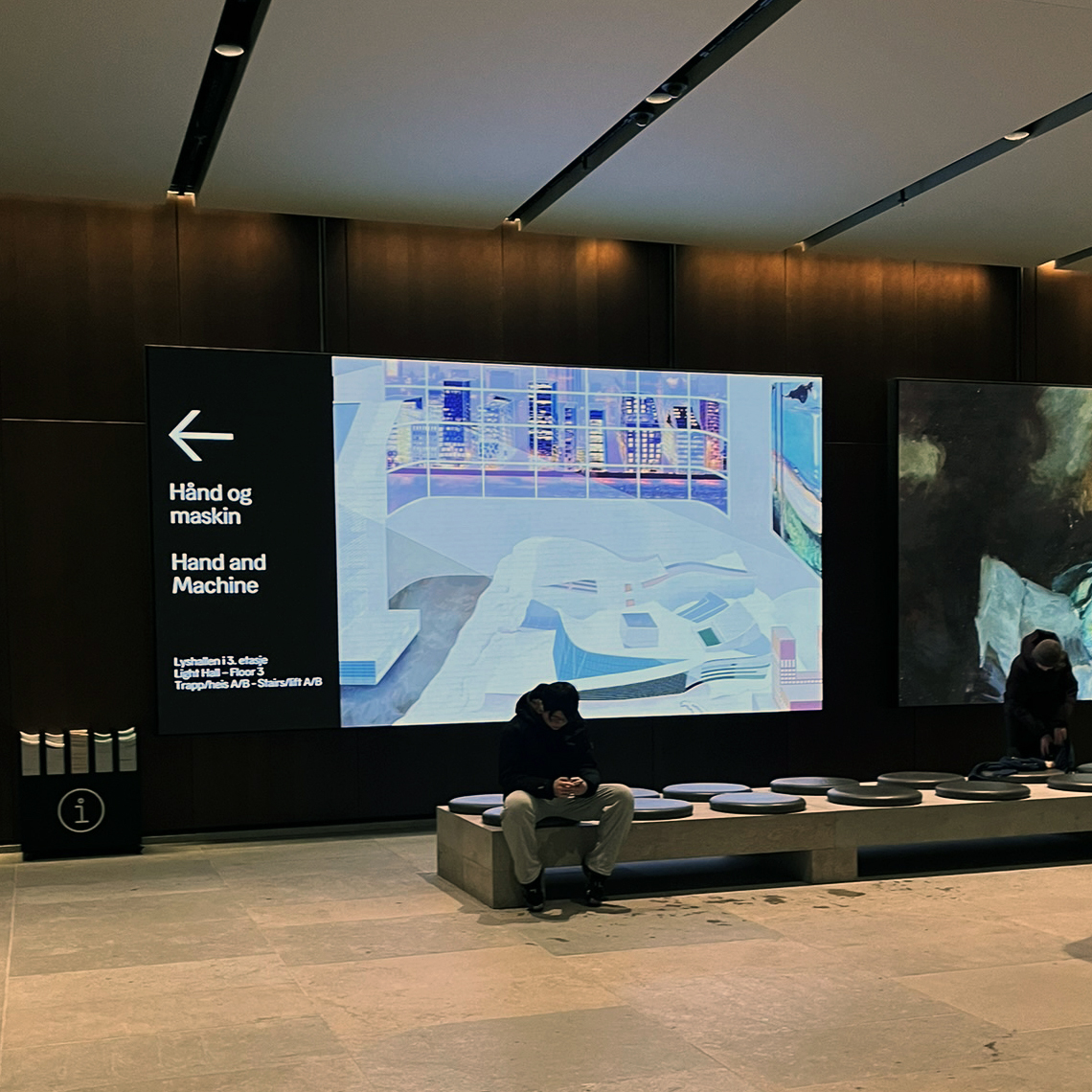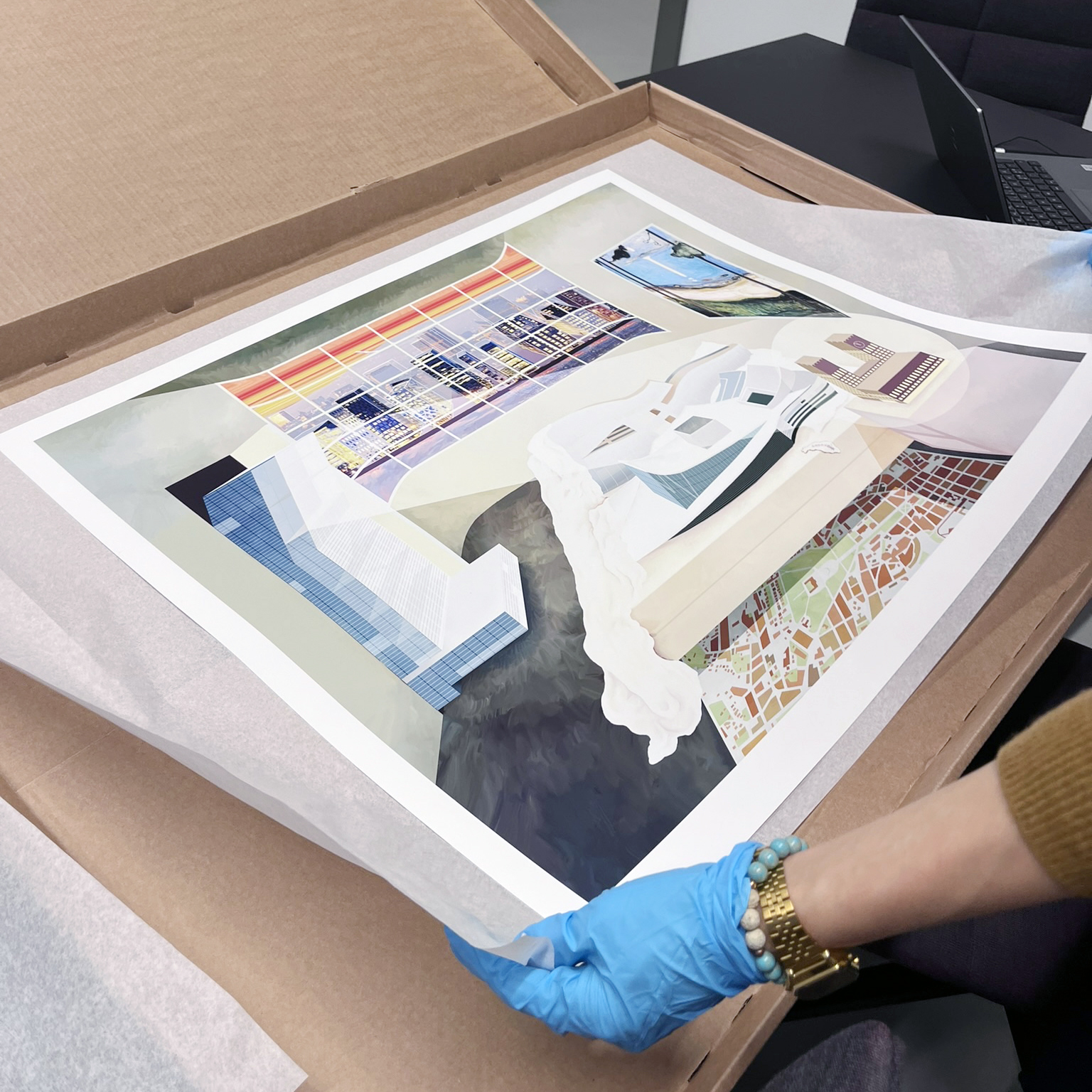#0212 Oslo 2011: An after-party in the new city (the remake of Madelon Vriesendorp's Flagrant délit)
Site
Architecture history and Oslo, Norway
Planning / Realized
'Hand & Machine', a group exhibition curated by Joakim Skajaa
Client
National Museum (Nasjonalmuseet), 2023-24
Team
Idea:
Mirza Mujezinovic
Production:
2013-iteration: Jonas Løland, Anders Tønder Sletbak;
2023-postproduction: Mirza Mujezinovic.
Oslo 2011: An after-party in the new city (the remake of Madelon Vriesendorp's Flagrant délit)
The image was made as a response to the pertaining condition at the time, where urbanity was intrinsically bound to the emerging culture economy and its spectacular architecture. Oslo's waterfront was being urbanized through different ideological statements: Snøhetta's building as a landscape, Piano's building as a tectonic sculpture, Herreros' building as a metropolitan icon and Kleihues/Schuwerk's building as a material fortress. With such an overdose of potent architecture it was clear that an era was coming to an end. Therefore, this image tries to depict the very moment of post-coital tristesse: A new city has been conceived, but has it already outdated itself?
The reason why Herreros busts Piano and Thorsen is not accidental, but rather connotational. Astrup Fernley Museum and Opera building are horizontal structures, whereas Munch Museum is a vertical one, an encounter offering interesting interpretations and speculations on the city and its culture economy. Yet, I leave it to a spectator and his/hers imagination to assign a role (and subject-object relationship) to each of the protagonists in the given moment.
The image was created out of the affection towards historical precedents such as Vriesendorp's iconic image, with an aim to approach contemporary architecture and city.
The first iteration of the image was made for the third Oslo Triennale in 2007. The protagonists were different, yet the intetion was the same. The second iteration was made in 2013 and prior to the exhibition at the National Museum, the image was never officially published. It was only shown in Mirza'a lectures, as well as being randomly glued to a wall at Malarchitecture's office space.
In 2024 the image was bought by the National Museum, to be a part of the museum's permanent collection.
"Hånd og maskin. Arkitektoniske tegninger", exhibition info page at the NAtional MuseumThe image was made as a response to the pertaining condition at the time, where urbanity was intrinsically bound to the emerging culture economy and its spectacular architecture. Oslo's waterfront was being urbanized through different ideological statements: Snøhetta's building as a landscape, Piano's building as a tectonic sculpture, Herreros' building as a metropolitan icon and Kleihues/Schuwerk's building as a material fortress. With such an overdose of potent architecture it was clear that an era was coming to an end. Therefore, this image tries to depict the very moment of post-coital tristesse: A new city has been conceived, but has it already outdated itself?
The reason why Herreros busts Piano and Thorsen is not accidental, but rather connotational. Astrup Fernley Museum and Opera building are horizontal structures, whereas Munch Museum is a vertical one, an encounter offering interesting interpretations and speculations on the city and its culture economy. Yet, I leave it to a spectator and his/hers imagination to assign a role (and subject-object relationship) to each of the protagonists in the given moment.
The image was created out of the affection towards historical precedents such as Vriesendorp's iconic image, with an aim to approach contemporary architecture and city.
The first iteration of the image was made for the third Oslo Triennale in 2007. The protagonists were different, yet the intetion was the same. The second iteration was made in 2013 and prior to the exhibition at the National Museum, the image was never officially published. It was only shown in Mirza'a lectures, as well as being randomly glued to a wall at Malarchitecture's office space.
In 2024 the image was bought by the National Museum, to be a part of the museum's permanent collection.
